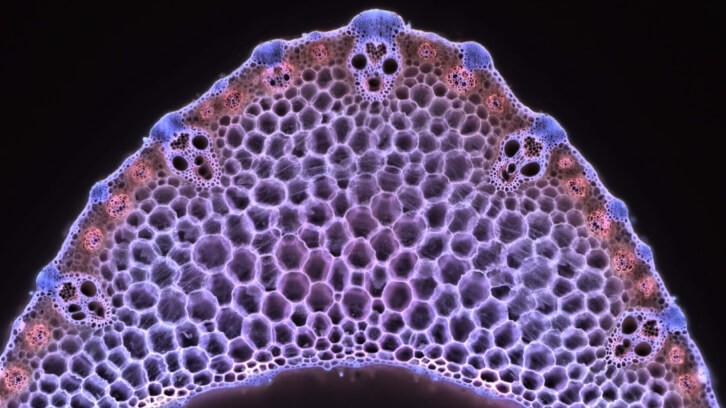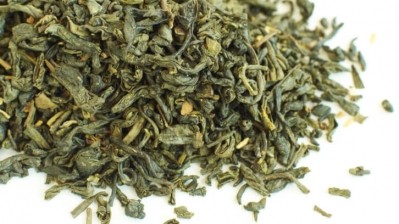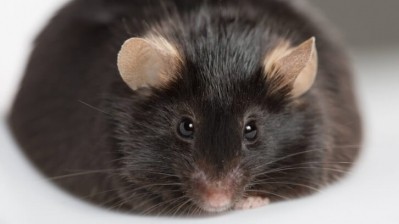Startup Spotlight
Q&A: SlimBiotics on its ancient plant-based probiotic strains for weight management

While most probiotics on the market are derived from human fecal matter, breast milk or other sources of dairy, SlimBiotics presents a grain-to-strain alternative sourced from Kimere – a fermented pearl millet porridge traditionally consumed by the Mbeere communities of Kenya.
NutraIngredients-USA caught up with biotics industry veterans Brian Peeters and Gregory Bonfilio, who joined the SlimBiotics team in 2022 as co-CEOs of the company’s U.S. subsidiary to discuss what drew them to these ancient strains, the significant outcomes of a recently published clinical trial, and how botanical substances may have much more to do with the microbiome than previously known.
NIU: What inspired you to become involved in bringing Slimbiotics to the US and how did your previous industry experience inform this move?
GB: We both had been working in the ‘biotic space’ for many years, and for each of us a moment of transition or change seemed to be happening. For quite some time we had shared the dream of working together on a project, and when we first saw SlimBiotics (in a remote booth at SupplySide West in 2021), we sensed that something special and different had arrived.
So many strains are derived from ‘human origin,’ and further, many of the stories and health benefits surrounding the traditional probiotics felt a bit tired and overdone. We came together with a genuine excitement to bring a plant-origin collection of strains to the marketplace, for a specific (and desperately needed) health benefit—overweight and obesity.
Strains obtained from a fermented food that has been consumed by generations of indigenous people, with known and respected health benefits, was too interesting to pass up. We recognized immediately that the SlimBiotics strains, and their growing body of scientific evidence, would garner the attention of today’s top brands and stand out in the biotic marketplace.
NIU: How has the probiotics category evolved over the years? What does the future of probiotics look like?
GB: Although the earliest probiotic supplements entered the market during the 1990s, most of us saw the real interest and sales start to take off with the introduction of the probiotic yogurt, Activia, and the huge ad campaign surrounding its launch in the US during 2006. Jamie Lee Curtis helped ‘probiotic’ become a household word, and even though Activia’s strain names were fictional—the stuff of marketing genius—the digestive and immune benefits were real and were clearly experienced by the consumer.
Over the last 15 or so years the probiotic market has expanded, diversified, broadened in scope, and is much better regulated. Representation of the probiotic industry through the International Probiotics Association (IPA) has been extremely effective, and the category has taken shape in a remarkable way.
As for the future, we will need to continue to bring gold standard human research to the forefront and to reduce the industry’s dependency on ‘generic strains,’ which are oftentimes all blended together in unmeasurable amounts and with unknown health benefits. Science must be strain specific. And in the future, we anticipate a shift towards other types of biotic ingredients and technologies, especially those related to postbiotics. Inactivated strains are soon to have their day in the sun—which will be fine because stability is not an issue!
NIU: Why did SlimBiotics choose to focus on the weight management category? What sets this probiotic apart from other weight management probiotics on the market?
GB: The market for weight management ingredients, and new trends in weight loss products, will ALWAYS be popular. Have a look at the obesity maps on our website and it becomes crystal clear why this category can only increase in the years to come.
The strains in the SlimBiotics blend are the subject of a great amount of pre-clinical screenings dating back more than ten years, and recent human studies support the findings of this early work. Specifically in the weight management category, there are only a handful of probiotic strains or combinations currently available; and in our view, the science supporting SlimBiotics is comparatively better.
Our strains achieved seven significant outcomes in our recently published clinical trial, a constellation of benefits falling within the weight, fat and metabolic health areas. Our partners, selling branded products into a variety of sales channels, will be able to make meaningful claims about the efficacy of their finished products, and these will be sure to capture the attention of the dietary supplement consumer.
NIU: Why Kimere as probiotic source? How were the strains identified and selected for the SlimBiotics formulation?
BP: Our medical research team has its base at the University of Kiel in Germany, and one of the PhDs exploring the effects of certain substances on metabolic health outcomes was born and raised in Kenya. Kimere porridge was staple food for him growing up, and of course he was aware that fermented foods contain microbes that confer health benefits.
Curiosity about these microbes lead the research team to the Mbeere villages around Mt. Kenya and the strains (47 of them) were isolated from swabs taken from the actual Kimere fermentation gourds. So, these strains were obtained ‘from the source’ and identified individually, and as a group.
Extensive pre-clinical screening, sequencing, and testing helped isolate the most robust, stable, and bioactive organisms from the collection. Although we have patents on seven strains isolated from the Kimere porridge, it was determined that three of them (all L. fermentum strains) were the best candidates to include on our human clinical work.
NIU: What science backs the product, and what does it show?
BP: The SlimBiotics strains are the subject of extensive pre-clinical screenings, and papers have been published on the design and execution of this work. More recently, we have completed and published a human clinical study (180 subjects) showing significant improvement in seven health outcomes: body weight, body fat mass, visceral adipose tissue, waist circumference, body mass index (BMI), waist-to-height ratio,
and liver steatosis grade. The last outcome, reduction of fatty liver (measured by sonography), is in our view extremely unique and possibly never before found in a probiotic ingredient. Through the second half of this year and into 2024, we have four additional human studies in the pipeline, the majority of which begin very soon.
NIU: When did SlimBiotics launch in the US and how is it performing? Where else is it being marketed, and how is it performing globally?
GB: We launched SlimBiotics in earnest at the beginning of this year, and we are extremely happy about the reception it has received in various dietary supplement channels in the US and worldwide. Because our headquarters is in Vienna, we have a good entrée into the European marketplace. At the same time, we are talking with potential partners in Asia, Australia, and Latin America. Although we are not able to share specifics about early adopters and partners at this stage, we can say that SlimBiotics is of real interest to the top tier brands in our space, and we anticipate the first finished products to be available from our partners as early as Q4 of this year.
NIU: Could you tell us a bit more about you Microbotanix platform for the discovery of plant-based biotic strains and phytonutrients? What is next for SlimBiotics and Microbotanix?
GB and BP: When we began with SlimBiotics, we felt that the confluence between ‘plant-origin’ and the microorganisms isolated directly from fermented foods and beverages needed further exploration. Increasingly we are learning that the modulation of microflora is an extremely complicated science and that botanical substances may have much more to do with the microbiome than previously known. This exploratory work is just getting started, but we developed Microbotanix as a discovery platform that will allow us to look more deeply into this concept and help us uncover more ‘ancient strains’ that offer relevant health benefits.
The SlimBiotics team is collaborating with a variety of different scientific groups, both private and academic, to identify and unlock the next unique set of biotic ingredients. Frankly, there are too many amazing potential options and not enough time-energy-funds to accomplish all of the target work streams. Realistically, our next offering will probably still fall within the metabolic health category, but perhaps looking at outcomes that go beyond weight management. Stay tuned.
NIU: What is your advice to other startups in the probiotics space and perhaps the wider industry?
GB and BP: The SlimBiotics experience has once again taught us the importance of having all the key elements in place (for any active ingredient in the DS space), prior to attempting a launch or introduction. Quite simply, MORE is required now for a probiotic ingredient or blend to be qualified by top tier companies, and every aspect of the technical package – the Master Checklist, as we call it – must be considered.
The days of obtaining a strain and running a few simple pre-clinical studies, or borrowing science from a similar genus and species, are over. Strains must be fully characterized, with each and every aspect of safety, efficacy, composition, and purity – not to mention stability, considered and detailed.
This holds true for all new dietary supplement ingredients, but perhaps more so for probiotics, that purport to being alive and truly effective. A good marketing and origin story is extremely helpful, but without a complete technical package, the marketing will appear to be ‘fluff.’ When it is time to bring your product to the market, securing the right and compelling trademarks, with a fascinating origin story and marketing ecosystem, are essential to gain a foothold for a new ingredient in the biotic category.

















